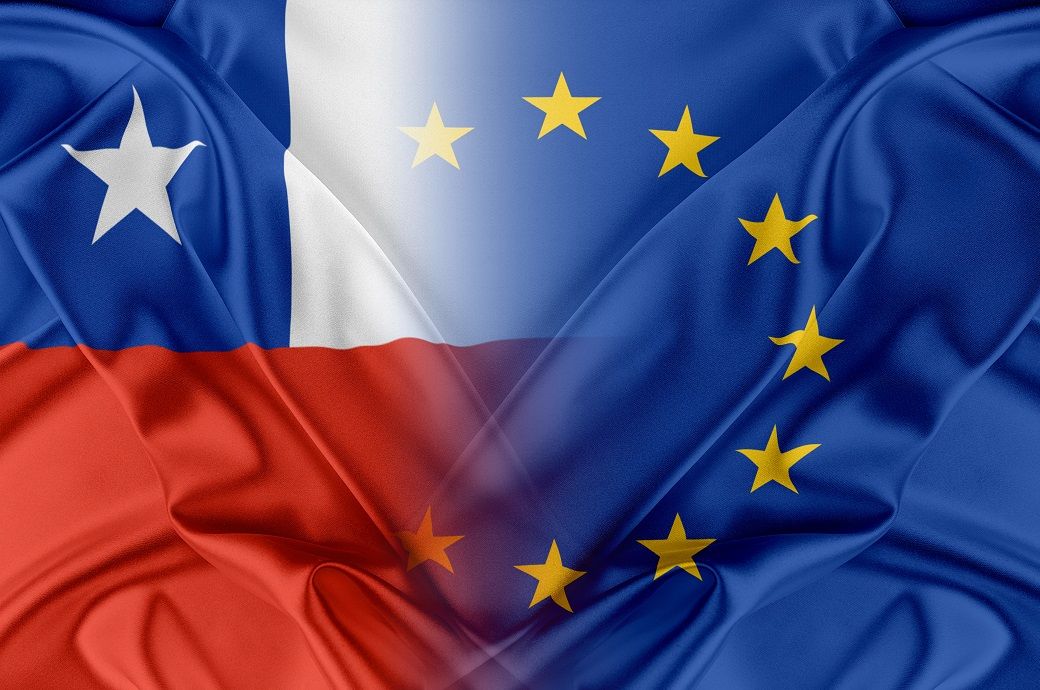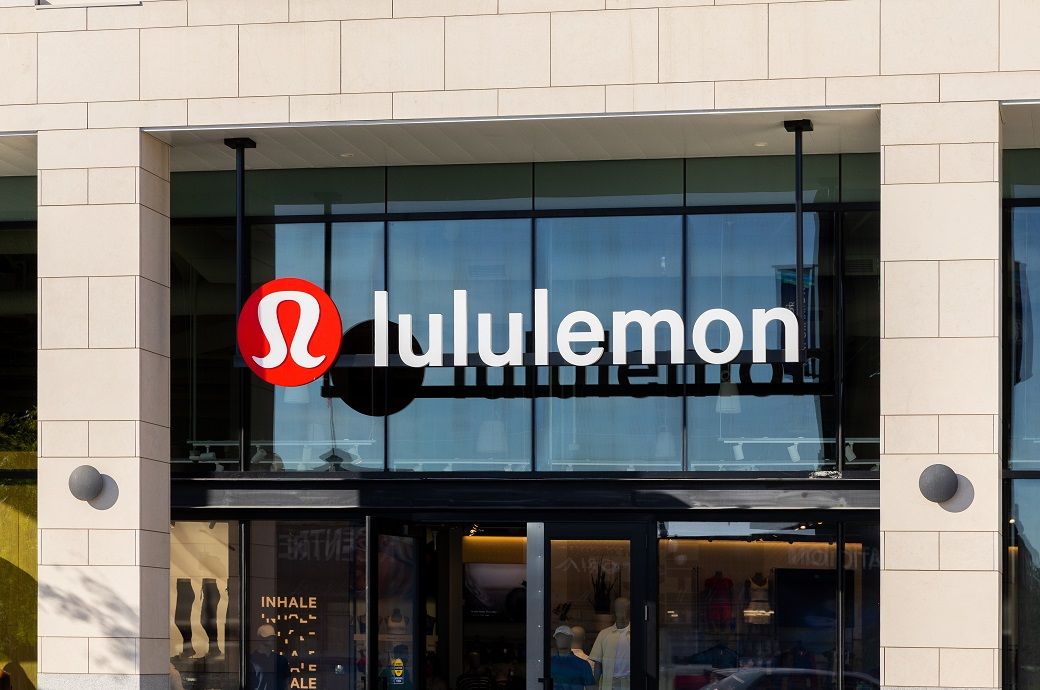Fashion
Revolution Beauty co-founders return, firm no longer for sale, results look weak

Published
August 22, 2025
In what’s been a turbulent period for Revolution Beauty Group, the company’s ending August with some positive news. It now wants to remain independent and aims to raise around £15 million in new funding under returning CEO Tom Allsworth.
He was a co-founder along with also-returning-as-a-consultant co-founder Adam Minto. They’d both quit earlier after a series of accounting issues.
Their return comes as the new injection of cash is going to be needed because the multi-channel mass-market beauty group’s latest accounts released Friday (22 August) revealed sales for the year ended 28 March were down by a quarter, as margins plummeted and losses grew.
No wonder relatively new chairman Iain McDonald said the business, currently valued at just £11 million, had “lost its way”.
But he bullishly added: “We are confident that with a return to the founder-led management team who originally scaled the brand, there is a clear path back to growth and long-term value creation.”
So that means Allsworth now filling the CEO role vacated in April by the departed Lauren Brindley, to ignite the new era.
That comes as the business also announced it’s out of the ‘for sale’ market having failed to receive a “recommendable” offer since May.
Offers had included usual suspect Frasers Group, although at the time reports suggested any such move could “stoke animosity” between Frasers and Boohoo/Debenhams Group, a major shareholder of Revolution Beauty.
Declining performance
Under Ellsworth’s guidance, there’s a lot of work to do as the business revealed a further deterioration of performance.
Sales for the year to end-March (FY25) fell 25.5% year-on-year to £142.6 million, after the planned rationalisation of product and brand portfolio.
Net sales in Q1 of FY26 have also declined 29% compared to FY25, although it said decline rates had improved in June and July. It expects revenues for Q2 to be lower than the same period for FY25 by around 25%.
Gross margin for the year dipped to 38.2% from 46.2% “after significant impact from the planned clearance of non-core inventory”.
Revolution Beauty has also plunged to a £16.8 million statutory loss before tax, compared to an £11.4 million profit last year.
On the plus side, it said retail distribution has been expanded in certain key geographies with some customer wins and space increases. Gross inventory has been reduced by 41.1% to £33 million and the number of social media followers has grown.
Revolution Beauty says action has been taken to address the issues by resurrecting profitable stock-keeping units that have been discontinued, relaunching the Relove value brand with new retail distribution partners and establishing a profitable discount outlet channel.
The pipeline on new product development has been enhanced, with more digital-first product launches planned, it added.
There are also a number of markets and retail customers where performance has continued to be strong or improved. Sales on Amazon in both Europe and the US have continued to show strong growth.
“Significant” US retail customers have returned to year-on-year growth and sales in some international markets, such as Turkey, “have exceeded expectations”.
“Consequently, the company expects year-on-year revenue decline rates to reduce significantly in the second half of the year”, it reiterated.
CEO and co-founder comeback
As noted, Allsworth is due to return to the business as CEO “in days” to lead a “revised and rebalanced business plan to set a clear path back to growth and long-term value creation”. He will work alongside his fellow co-founder Adam Minto as a consultant to the company.
At the heart of this plan is a return to Revolution Beauty’s original formula for success “fast, trend-driven innovation combined with a product-led strategy”.
Based on the performance of the business in the first four months of FY26, the company now expects to achieve revenues in the range of £110 million-£120 million while recouping EBITDA losses incurred in the first half of the year, so that adjusted EBITDA of low-single-digit millions will be achieved.
Meanwhile, the £15 million equity fundraising “will enable the company to reduce its level of net debt and provide sufficient working capital to support the re-balanced plan”. The company is also set to announce it has extended its revolving credit facility until July 2028.
Copyright © 2025 FashionNetwork.com All rights reserved.
Fashion
ITA to continue till Advanced Framework Agreement ratified: EU, Chile

A review of the trade and sustainable development provisions of the ITA is under way.
EU high representative for foreign affairs and security policy Kaja Kallas recently met Chilean Minister of Foreign Affairs Alberto van Klaveren. Both co-chaired the first EU-Chile Joint Council under the Advanced Framework Agreement in Brussels.
The EU and Chile are committed to deepening their trade and investment relations under the Interim Trade Agreement, which came into force on February 1 and will remain in force until the new Advanced Framework Agreement has been fully ratified.
Both sides will continue to cooperate on ensuring reliable and sustainable supply chains, including through diversification and support to strategic investments.
The first EU-Chile Trade Council meeting was held under the new ITA, according to an EU release.
The EU is Chile’s third-largest trade partner and the top source of foreign direct investment (FDI).
Both sides will continue to cooperate on ensuring reliable and sustainable supply chains, including through diversification and support to strategic investments, a joint statement issued said.
Chile welcomed the interest of the EU in establishing a dialogue with the member countries of the Comprehensive and Progressive Agreement for Trans-Pacific Partnership (CPTPP). Both parties affirm their ambition to translate this dialogue into a shared agenda.
Both sides remain committed to ensuring the effective implementation of the Advanced Framework Agreement, and to achieving its full ratification.
The provisional application of the EU-Chile Advanced Framework Agreement began on June 1, 2025.
Fibre2Fashion News Desk (DS)
Fashion
Chanel debuts A$AP Rocky as ambassador, with Margaret Qualley teaser video

Published
November 30, 2025
Chanel has appointed A$AP Rocky as a new brand ambassador and debuted his tenure with a teaser video shot in New York co-starring Margaret Qualley.
The video appeared Sunday just 48 hours before Chanel’s couturier Michel Blazy will stage his debut collection of Métiers d’Art also in New York. It’s a unique line first created by Karl Lagerfeld that highlights the unique stable of artisans Chanel has assembled in such skills as embroidery, pleating, glove-making and costume jewelry.
Directed by Michel Gondry, the 2.49-minute short opens with the stars waking up in the bed of a walkup apartment in Williamsburg. Where, after a quick peck on her lover’s forehead, Qualley disappears into a tiny bathroom, before magically changing out of her blue nightie and reappearing in a red, white and blue houndstooth Chanel jacket, paired with pale blue pants, her hair in a chignon.
https://www.youtube.com/watch?v=live
No sooner than she has disappeared, than A$AP leaps out of bed and descends the tenement building’s outside steel stairs and sets off on a mad dash after Qualley. This leads to him swimming under the Brooklyn Bridge, and running north through the Lower East Side, before finally catching up with Qualley at Astor Place station. All the action backed up my moody ambient music courtesy of Le Motel.
In between, the rapper and husband of Rihanna, manages to find time to stop in two discount stores to acquire pants and a blazer. Arriving just in time, to genuflect onto one knee, and hold out a small white Chanel box, containing one assumes a diamond engagement ring, at the station entrance. The sight of which leads the actress to leap into the air in paroxysm of joy, before the happy couple march arm and arm back into the subway.
And off one assumes to attend the Métiers d’Art show, which will be revealed on Tuesday, 8 p.m. NYC time.
Copyright © 2025 FashionNetwork.com All rights reserved.
Fashion
Canada’s Lululemon revamps commercial strategy with new global leader

Ms. Burgoyne joined lululemon in 2006 and became the company’s first President in 2020. Throughout her tenure, she has assumed roles of increasing responsibility and led the North America business through periods of rapid growth and expansion.
Lululemon Athletica has announced that Celeste Burgoyne, president of the Americas and global guest innovation, will leave at the end of December 2025 after 19 years with the brand.
The company will consolidate regional leadership and has appointed André Maestrini as president and chief commercial officer, giving him global oversight of stores, regions, digital channels and commercial strategy.
“We are grateful for Celeste’s leadership and significant contributions to lululemon’s business and culture over the past 19 years. She has been instrumental in growing our footprint in the Americas, creating high-quality guest experiences, and mentoring our teams across the organization,” said Calvin McDonald, Chief Executive Officer, lululemon. “I deeply appreciate her partnership and friendship, and we wish her all the best in the future.”
“My time at lululemon has been both inspiring and rewarding beyond belief,” said Ms. Burgoyne. “I am so proud of what we have accomplished as an organization since I joined in 2006 and know the team will take the company to even greater heights in the years to come. I look forward to continuing to support the brand as a lifelong fan.”
In conjunction with this announcement, lululemon has made the decision to consolidate regional leadership across the company and appoint André Maestrini as President and Chief Commercial Officer, effective immediately. Mr. Maestrini will continue to report directly to Mr. McDonald.
In this newly created role, Mr. Maestrini will provide integrated oversight of all of lululemon’s regions, stores, and digital channels globally. He will also oversee lululemon’s global commercial strategy with a focus on continued market expansion, revenue generation, and accelerating best practice sharing, across all regions including North America.
Mr. Maestrini joined lululemon in 2021 as Executive Vice President of International. In his current role, he has overseen lululemon’s operations in EMEA, APAC, and China Mainland, and has helped to more than quadruple lululemon’s international revenues.
“André has demonstrated a proven ability to unlock opportunities, advance our global expansion, and deliver growth across multiple markets,” said Mr. McDonald. “Leveraging operational discipline, deep guest insights, and extensive brand-building experience, André is the ideal person to lead our business across all markets, including North America, as we remain focused on delivering value for our guests, employees, and shareholders.”
Before joining lululemon, Mr. Maestrini spent 14 years at adidas in various senior roles across the globe. During this time, he served in a number of General Manager positions where he helped grow the company’s global sports categories and regional markets. Prior to adidas, Mr. Maestrini held marketing roles at The Coca-Cola Company, Danone, and Kraft Jacobs Suchard.
Note: The headline, insights, and image of this press release may have been refined by the Fibre2Fashion staff; the rest of the content remains unchanged.
Fibre2Fashion News Desk (RM)
-

 Sports1 week ago
Sports1 week agoWATCH: Ronaldo scores spectacular bicycle kick
-

 Entertainment1 week ago
Entertainment1 week agoWelcome to Derry’ episode 5 delivers shocking twist
-

 Politics1 week ago
Politics1 week agoWashington and Kyiv Stress Any Peace Deal Must Fully Respect Ukraine’s Sovereignty
-

 Business1 week ago
Business1 week agoKey economic data and trends that will shape Rachel Reeves’ Budget
-

 Tech6 days ago
Tech6 days agoWake Up—the Best Black Friday Mattress Sales Are Here
-

 Fashion7 days ago
Fashion7 days agoCanada’s Lululemon unveils team Canada kit for Milano Cortina 2026
-

 Tech6 days ago
Tech6 days agoThe Alienware Aurora Gaming Desktop Punches Above Its Weight
-

 Politics1 week ago
Politics1 week ago53,000 Sikhs vote in Ottawa Khalistan Referendum amid Carney-Modi trade talks scrutiny


















